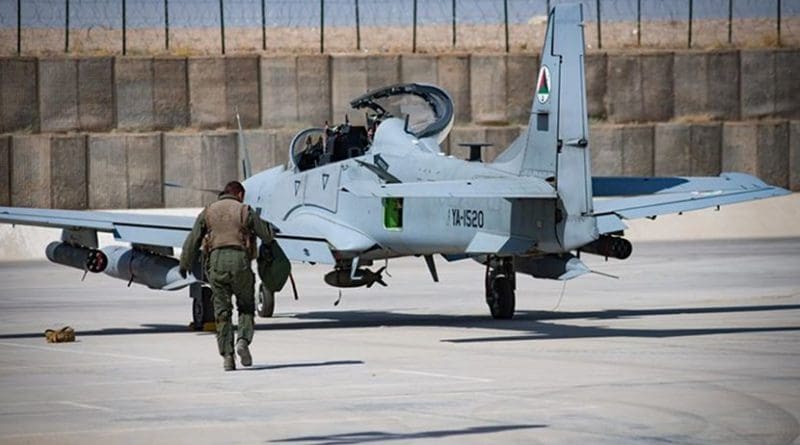The R4+S Approach For Afghanistan – Analysis
By IPCS
By Rajat Ahlawat*
The new US strategy for Afghanistan has switched from a ‘time-bound’, ‘troop numbers-based’ approach to a ‘conditions-based’ approach. A conditions-based approach would give the US administration more flexibility in terms of determining troop numbers and their roles and cooperation levels. US Secretary of Defense, James Mattis and Chairman, Joint Chiefs of Staff, General Joseph Dunford, in their testimony before the Senate Armed Services Committee on 3 October 2017, explained the new strategy with the acronym ‘R4+S’ which stands for Regionalise, Realign, Reinforce, Reconcile and Sustain.
Theoretically the strategy looks solid, but it will require long-term commitment and cooperation by the US to bring sustainability and stability to Afghanistan.
The Four ‘R’s, According to the US:
- Regionalise: The US will focus on the roles of regional states neighbouring Afghanistan; according to Mattis, these are India, Pakistan, China, Iran and Russia.
- Realign: The US troops will focus on advising Afghan forces at battalion levels, and will participate with them in combat operations.
- Reinforce: This entails a further addition of over 3,000 US troops, and fighter and heavy bomber aircraft. The US also expects NATO and its allies to contribute with more troops (around 1,000 in total) and financial support.
- Reconcile: The hope of a desired political outcome from the enhanced military operations.
‘Regionalise’?
With the US focusing on India as a security and economic partner under the new strategy, India’s economic role in Afghanistan will see a boost. But much against Washington’s desires, India will not maintain military presence in Afghanistan. Meanwhile, the likelihood of Pakistan cracking down on terror-groups acting against India and operating from its territory is low, despite US pressure. Islamabad is also unlikely to accept New Delhi’s greater role in Afghanistan. The US will have to navigate through this fundamental difference of opinion.
US President Donald Trump’s administration has also failed to reach out to Russia. Moscow-Washington cooperation in Afghanistan is unlikely to see the light of day in the near future. This apparent divide, which has manifested since the US-backed Quadrilateral Contact Group (QCG) meeting in Oman did not invite Russia and the Shanghai Cooperation Organisation (SCO) meeting on Afghanistan in Moscow did not see any US participation, points against a possible ‘regionalisation’.
Although President Trump has tried to reach out to his Chinese counterpart President Xi Jinping, it is still doubtful whether this will translate into any real cooperation on ground in Afghanistan. While China’s participation in both the formats points towards its rising role in Afghanistan, the US’ failure to develop a consensus on the technicalities of China’s future role in Afghanistan would prevent any potential US-China cooperation in Afghanistan. This might result in China pursuing its independent economic interests primarily based on its Belt and Road Initiative.
Iran is also a key regional player which shares a long and porous border with Afghanistan, and is directly affected by the Afghan security situation and illicit drug economy. Both countries share some common interests like curbing the illicit drug economy in Afghanistan and suppressing the presence of Islamic State in the country. But with the current US administration viewing Iran unfavourably, especially with President Trump’s aggressiveness against the nuclear deal, Tehran might not hold itself back in acting against Washington’s potential interests if it seeks to benefit from them.
‘Realign’ and ‘Reinforce’
The Realign and Reinforce components are expected to go hand-in-hand. After 2014, NATO had ceased combat roles and restricted its troops to training and advisory capacities, and primarily on the brigade and divisional levels. Now the US troops would focus more on lower battalion levels and participate in combat operations led by the Afghan forces, and coordinate NATO’s fire support.
However, doubts remain whether the alliance countries would be willing to send their troops into combat. NATO Chief Jens Stoltenberg has stated his preference for NATO troops not partaking in battles. This might lead to over-burdening of US troops who will be expected to conduct ‘advise and assist’ missions in active combat operations. This begs the question: 16 years on, why are the Afghan forces not operationally capable, and why is the Afghan Air Force, largely incompetent?
‘Sustain’
The most difficult component of the new strategy is the ‘S’, which stands for ‘Sustain’. Achieving long term “stability and security” in Afghanistan would require effective and independently-capable Afghan security forces; and there is still a long way to go before this is achieved. The limited capabilities of the Afghan forces means US troops would remain in the country for at least the coming six to seven years, which in turn would reaffirm the Taliban’s resolve of not agreeing to negotiate.
Except for a renewed focus on ‘advising and assisting’ at battalion levels during Afghan-led combat operations, there is nothing new in the Trump administration’s strategy that the US has not tried earlier. Though a conditions-based approach would give the US more adaptability on how they define “victory,” the current security situation combined with the US’ differences with Russia, China, Iran, and now Pakistan will prove to be major hurdles in the success of the strategy.
* Rajat Ahlawat
Research Intern, IReS, IPCS

